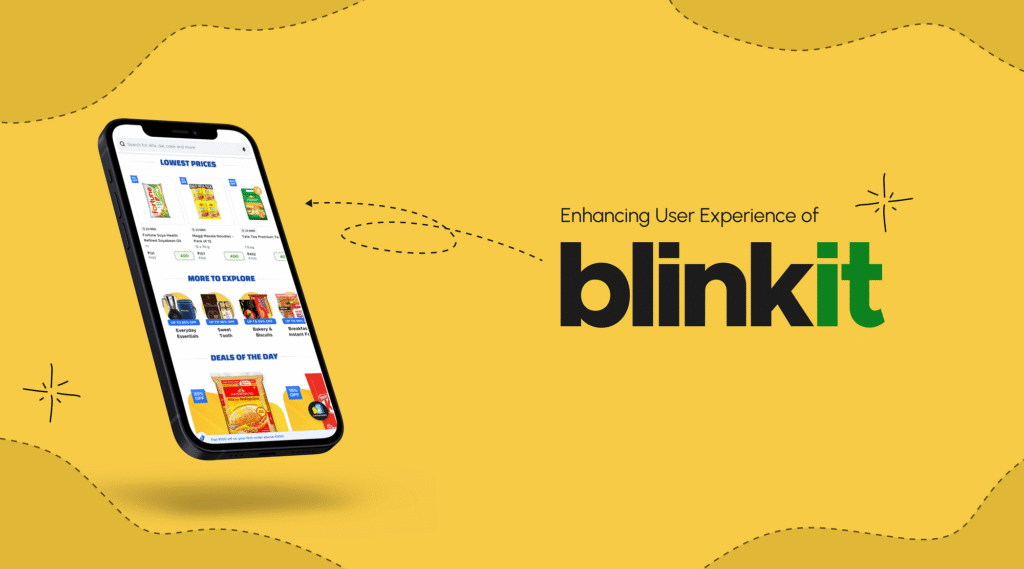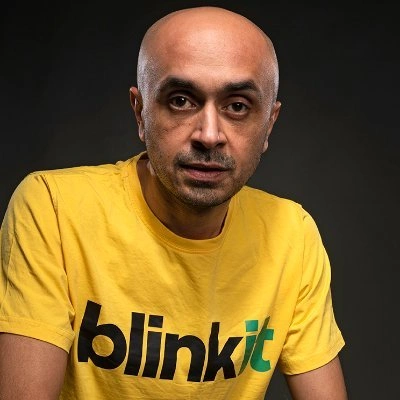In the fast-paced, sometimes cataclysmic landscape of Indian startups, few narratives capture the grit, smart pivots, and unwavering commitment to consumer ease like that of Albinder Dhindsa and Blinkit. In every phase — from its infancy as Grofers, a modest hyperlocal grocery delivery app, to its today’s colorful incarnation as a quick commerce juggernaut that vows to deliver your groceries in a flash — Dhindsa has navigated his company through market crashes, cash crises, and cutthroat competition. His journey is still an inspiring case study in entrepreneurial determination, pivoting with a dramatically changing consumer landscape, and finally, creating a sharing economy business that has transformed the way urban Indians get their goods from the streets.
As of 2025, Blinkit is a key cog in India’s digital economy, a booming component of the Zomato family, and a leader in the still-burgeoning world of quick commerce in retail—especially with regard to customer satisfaction. To appreciate the “blink” of today, you first have to follow the long, tortuous, but finally fulfilling road paved by its creative sparkplug co-founder.
The Formative Years: A Spark Lit Both in the US and at Zomato

Albinder Dhindsa’s scholarly and formative career path provided him with the knowledge and experience to forge an entrepreneurial path. An alumnus of India’s elite Indian Institute of Technology Delhi (IIT Delhi), where his engineering mettle was tempered, he finished his studies with a Master of Science in Transportation and Highway Engineering from Columbia University in New York. This combination of deep analytical skills and an innate global perspective would be immensely valuable in addressing the intricately complicated logistical issues that accompany e-commerce.
His career start came through experiences at large companies such as IBM, where he served as a senior software engineer, followed by Cambridge Systematics, where he was a senior associate. These experiences gave him foundations in exposure to large-scale systems and solving complex problems. The entrepreneurial spirit got a hold of him while working at Zomato. Albinder was the Head of Logistics at Zomato in 2013. Besides defining his long-term vision, this role gave him direct exposure to the complexities of last-mile logistics, network optimization, and India’s emerging online food delivery industry. The scaling of logistics, figuring out how to manage a distributed fleet of delivery, and learning what consumers expected in terms of speedy delivery that he’d learned at Zomato would become the bedrock of his own latter venture. It is here that he first recognized the unique potential and indeed the urgent need for innovation in delivering our most basic necessities.
Grofers, The Beginning of a Grocery Delivery Fantasy
The seeds of Grofers’ idea began to take root back in 2013 when Albinder Dhindsa, along with his co-founder Saurabh Kumar (whom he met through a mutual friend) realized a very apparent pain point in the life of the Indian urban consumer—grocery shopping was such a chore! Their original idea was to build a hyperlocal delivery platform that would help consumers reach out to their neighborhood Kirana stores, order groceries online, and get those delivered at home. The model was pure, but audacious in its simplicity. Digitize the local mom-and-pop commerce and introduce ease and convenience to a largely fragmented, unstructured sector.
Grofers ran an asset-light aggregator model. They did not possess inventory but coordinated deliveries from local stores. This asset-light model enabled quick scaling and lower initial capital expenditures. That meant there were unique challenges that came with it. Quality control, standardized pricing between various stores, and a dependence on the efficiency of single Kirana stores were all major challenges. The logistics were a nightmare too—getting orders in on time, getting gas delivery riders to maximize efficiency and minimize their fuel usage, coordinating orders based on real-time inventory across hundreds of small partner stores—all of it would take torrential technological and operational know-how.
In hindsight, these challenges may seem insurmountable, but Grofers nevertheless grew rapidly and raised hundreds of millions in venture capital. It successfully closed seven rounds of funding at a leveraged valuation of nearly $8 billion from heavy-hitters SoftBank, Sequoia Capital, Tiger Global, and Apoletto Asia, among others, indicating an enormous vote of confidence by investors in the online grocery delivery segment. The company was in hyper-growth mode, moving into dozens of new cities, hiring a massive army of delivery workers, and establishing its tech platform. The economics underlying connecting a network of small local convenience stores with a large customer base, especially in the case of low-margin groceries, was still quite the conundrum. The competition ramped up as players such as BigBasket (which implemented an inventory-led model) and then, eventually, general e-commerce behemoths entered the game.
The Great X Transition Casting a Wider Net—From Grocery Delivery to Quick Commerce
The real inflection point for Albinder Dhindsa’s entrepreneurial journey—and, really, for the company—came with a gutsy strategic shift. By 2020, when the COVID-19 pandemic hit all of India, consumer behavior had changed dramatically. E-commerce boom Lockdowns and a new focus on convenience and safety fast-tracked the need for online delivery services. It highlighted one critical drawback of the scheduled grocery delivery model that Grofers was following for the most part. It wasn’t fast enough for those urgent needs.

In a world where people have grown accustomed to not waiting for things, Dhindsa and his team figured out that the big opportunity wasn’t necessarily online grocery but in the form of quick commerce—quickly delivering essentials, and eventually everything else, in minutes. This realization resulted in a complete turnaround of Grofers’ ground operational strategy. The “10-minute delivery” promise—completely unrealistic by any measure—ended up being the company’s new North Star.
To make this happen at that speed took a sea change. While earlier Grofers was focused on just further aggregating Kirana stores, now they pivoted to creating a much more dense network of dark stores. These are sometimes called micro or “last mile” warehouses strategically located within residential areas, filled with inventory built for high-speed picking and packing. This is where technology became key—sophisticated algorithms to manage inventory, forecast demand, optimize delivery routing and real-time tracking were essential. The priority moved from broad product selection to narrow, high-frequency, perishable, immediacy-driven consumption products.
This shift was so deep-rooted, that it required a complete overhaul of their brand identity. In December 2021, Grofers publicly launched its rebranded avatar as Blinkit. The name itself, after all, connoting high speed and instant everything, was a pretty obvious announcement of its new purpose. This wasn’t just a name change though, this was a distinct shift in position to account for a new consumer demand—instant access to all of their everyday essentials. Even though quick commerce introduced different logistical priorities, like even more efficient last-mile delivery and emphasis on localized inventory, it offered the possibility of improving unit economics with higher order frequency and bigger basket sizes from impulse buys.
The Zomato Acquisition – A Synergy Created out of Need
For all the ambitious pivot to quick commerce and the early wins in gobbling up market share, Blinkit ran into a new prickly wall—capital. The quick commerce model, with its requirement for a dense network of dark stores, highly optimized supply chains, and a massive fleet of delivery riders, was extremely capital-intensive. No market cup of coffee It was a race for scale, and funding was the key differentiator.
By the middle of 2022, Blinkit was already said to be going through a major liquidity crisis. To capitalize on this developing scenario, Zomato—an international food delivery behemoth, and former workplace of Swiggy Co-Founder Albinder Dhindsa as head of logistics—had a golden opportunity. Zomato had been banking on quick commerce for a while, seeing it as the most logical extension given their existing last-mile delivery infrastructure and hyperlocal customer base. For Zomato, acquiring Blinkit directly was a quicker, more resource-efficient route to enter and crush this tantalizing segment than trying to build it from the ground up.
The acquisition was completed by August 2022, an all-stock transaction worth about $568 million (₹4,447 crore at the time). As part of the agreement, Zomato issued shares valued at ₹4,447 crore to purchase Blinkit, thereby absorbing it into the fold as a wholly-owned subsidiary. Albinder Dhindsa—who co-founded Blinkit with the other founders in 2015—remained CEO, which guaranteed continuity of vision and operational know-how.
Also check:- Here are ten small business ideas to start in 2025
The Zomato acquisition turned out to be a lifesaver for Blinkit and a tactical genius move for Zomato. Blinkit immediately got hooked up to Zomato’s vast cash reserves, solid technical backbone, and a huge ready-made customer base that was already used to ordering online. Zomato expanded its food delivery-centric operation into a wider range of services, entering the high-frequency quick commerce market, and using its large fleet of delivery partners to drive operational synergies. The operational merger facilitated the exchange of best practices in spheres such as logistics, customer service, and technology, further enhancing Blinkit’s edge over competitors’ forces, Swiggy Instamart and Zepto. The market reaction was initially positive but lukewarm, the long-term, strategic advantages of the pairing for both companies soon became evident.
Blinkit in 2025: Impact, Innovation, and the Way Forward
As of 2025, Blinkit is one of many leaders in India’s quick commerce space – a development achieved mainly by means of its fateful pivot and the powerful help of Zomato. For one, its influence on urban Indian consumer behavior is nothing short of remarkable. The “10-minute delivery” guarantee has raised the bar on consumer expectations, creating the new normal of instant gratification for anything and everything from groceries to snacks to emergency electronics and stationery, and even last-minute gifts. This has not only created the need for traditional retailers to adapt but has done the same for other e-commerce players, contributing to a larger digital retail acceleration.
Blinkit’s innovation goes well beyond mere speed. The company has never shied away from testing new product categories, adding offerings that go well beyond the grocery staples in its perimeter to include everything from medicines and pet supplies to personal care products and even some electronics, beauty products, and holiday items. This rapid growth is supported by data analytics that pinpoint where demand is locally, so a dark store is stocked with exactly what customers in defined localities need and wants the most, delivered in as little as minutes.
The quick commerce model is not without its challenges. It continues to be a tricky game of balancing act on the road to long-term profitability. Just finding the balance between cash-burning hyper-growth and positive unit economics, effective delivery costing to minimize inventory spoilage, and maintaining a huge fleet of delivery riders — all operational complexities that are ongoing. Competition is still hot, with Swiggy Instamart and Zepto snapping at each other’s heels to grab market share. While the smaller players such as Dunzo have been battered by severe financial headwinds, the quick commerce war still rages on.
With Albinder Dhindsa at the helm, Blinkit’s long-term vision in 2025 would likely be deepening its penetration in the cities it operates in today, expanding into new Tier 2 and Tier 3 cities that share a similar demand for convenience, and continuing to improve its operational efficiency through tech and automation. The company has started to experiment with making customers more sticky – maybe with things like loyalty programs, customized services, and even more advanced service value propositions. The long-term prospects of quick commerce in India are huge, propelled by a young, tech-savvy population and rapid urbanization.
Conclusion: A Legacy Forged in Speed and Adaptability
Albinder Dhindsa’s entrepreneurial journey with Blinkit is a fascinating story of vision, fortitude, and the art of transformational strategy. From there, he succeeded in matching a rising consumer trend, developing a bold vision, surviving early criticisms, and maneuvering the all-important pivot that turned his company from a fledgling grocery delivery service to a leader in the quick commerce evolution. Zomato’s acquisition wasn’t an end, but a catalyst, launching Blinkit to new heights and solidifying its position as a critical player in India’s digital retail future.
While 2025 dawns, Blinkit, still guided by Dhindsa’s firm grip, is redefining convenience to millions every day and the Indian startup landscape, it seems, is rewarding those who can see the future — and pivot just like lightning, at the speed of thought. His legacy isn’t just founding a great company. It’s in forging a new customer expectation, revealing the potential of ultra-fast delivery, and showing that even in high uniformed rate businesses innovation and self-executing can generate incredible value.

